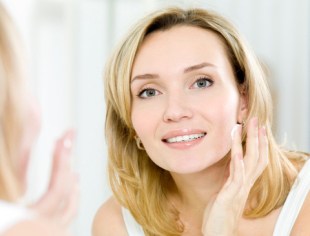All about Retinol
Retinol is a topical retinoid from the vitamin A family which has powerful therapeutic potential in the management of aging skin. Studies have demonstrated that once-daily topical applications of Retinol improve fine lines and wrinkles, lighten pigmentation, rebuild the stratum corneum, and increase dermal collagen synthesis and assist angiogenesis (formation of blood vessels), all of which are common signs of aging skin.
How to Use Retinol
Vitamin A is a known photo-sensitizer and sun screen must always be worn during daytime use. Vitamin A is also sun-sensitive and its effectiveness will be diminished due to UV exposure, therefore the use of a sun screen will also protect its efficiency. For this reason it is best to use retinol in the evening only.
Retinol should be used in a pea sized amount on a clean skin. A moisturizer may be applied over the top if required. Start by applying the product on the face taking the residue down on to the neck and décolleté area. Care should be taken not to over use the product (especially on the neck) as this can cause too much sensitivity resulting in redness and itching of the skin. If this occurs less product should be used and less frequently.
How Often Should I Use Retinol?
Retinol may be used every evening however it needs to be slowly introduced into a skincare regime. For best results it should be used 2 – 3 times a week building up to every evening as the skin can tolerate a more regular application.
What Percentage of Retinol Should I Use?
Unencapsulated Vitamin A present in a formulation over 0.5% can cause stinging, peeling and sensitivity, often leading clients to discontinue use of their product thus, forfeiting results. It is for this reasonsome companiesuse an advanced encapsulation technology, which is a type of delivery system designed to release the active Vitamin A within the skin (rather than on the surface) ensuring better efficacy and results when combined and released with specific enzymes within the skin. You can compare this technology to that of a headache tablet, which coats the active ingredient within a capsule ensuring active and effective transportation.
Percentages in formulas can vary from 0.5% – 1% in over the counter preparations. A lower dosage should be used to start with building up to a higher percentage as the skin is able to tolerate a stronger percentage to target more severe lines and wrinkles. Low dose retinol may be continually used for years as part of a regular skincare regime.
How Do I Know if I Have a Good Quality Retinol Product?
A higher retinol percent and price point can often mislead consumers into thinking they are getting a better quality product which is in most cases is simply not true. Look for a product that is purchased through skincare specialists or cosmetic doctors and uses advanced encapsulation technology. Another good tip is to look at the color of the product. As Retinol loses its efficacy it turns darker in color changing from a pale yellow to a bright orange color. For this reason it is best to avoid the darker orange colored products.
Last Reviewed: 27-Jan-2014






